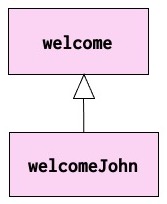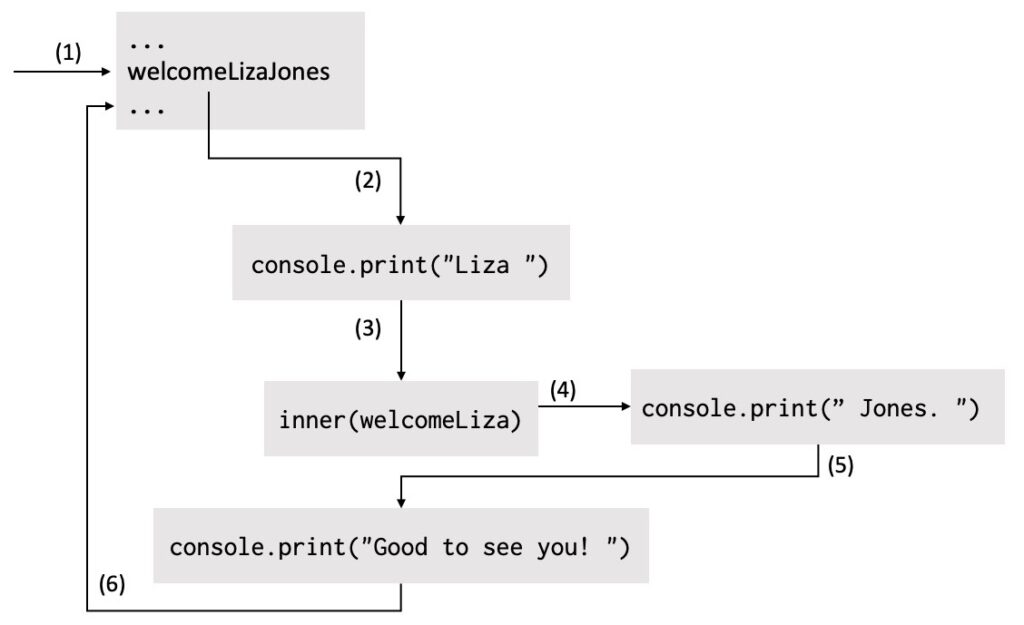Inner also works for classes, so we have to include that some way! Perhaps we may just put a note here saying that inner works in the same way for classes.
First we introduce the inner-statement, which is central for defining methods that may be used as supermethods of other methods. We start by a simple example of a method welcome that uses inner:
welcome:
console.print("Welcome: ")
inner(welcome)
console.print("Have a nice day!")Execution of welcome implies that console.print("Welcome: ") is executed, followed by the execution of inner(welcome). If welcome is executed by an invocation welcome, then execution of inner(welcome) is an action that has no effect.
Let us next consider the situation where welcome is a supermethod of some method like welcomeJohn below:
welcomeJohn: welcome
console.print("John. ")
An invocation of welcomeJohn implies that execution starts with the statements of the supermethod, here welcome. Execution of inner(welcome), then implies that the statements in the main part of welcomeJohn are executed. In this case there is only one statement, console.print("John. ").
...
welcomeJohn...After execution of this statement, control returns to after inner in welcome and console.print("Have a nice day!") is executed.

We may define other submethods of welcome as:
welcomeLiza: welcome
console.print("Liza ")
inner(welcomeLiza)
console.print("Good to see you! ")As can be seen, welcomeLiza includes an inner(welcomeLiza). We may a submethod of welcomeLiza:
welcomeLizaJones: welcomeLiza
console.print(" Jones. ") Execution of welcomeLizaJones then takes place as shown in the figure below:

